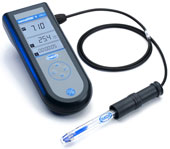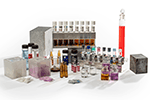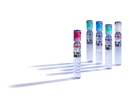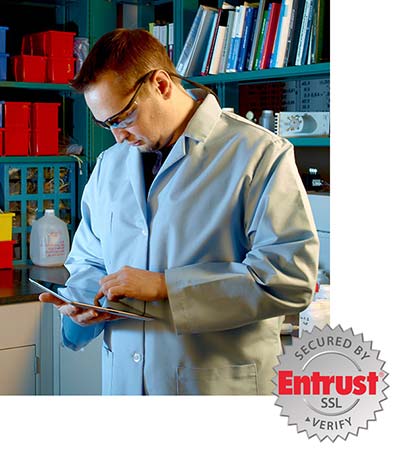-
Products
- Lab Instruments
-
Lab Meters and Probes
Calibration Standards Other Meters and Probes
- Chemistries, Reagents, and Standards
-
Online Analyzers
Ammonium Analysers Chlorine Analyzers
- CL17sc
- CL10sc Amperometric
- 9184 sc Amperometric
- Ultra Low Range CL17sc Colorimetric Chlorine Analyser
EZ Series Analysers- Iron
- Aluminium
- Manganese
- Phosphate
- Chloride
- Cyanide
- Fluoride
- Sulphate
- Sulphide
- Arsenic
- Chromium
- Copper
- Nickel
- Zinc
- Ammonium
- Total Nitrogen
- Total Phosphorus
- Phenol
- Volatile Fatty Acids
- Alkalinity
- ATP
- Hardness
- Toxicity
- Sample Preconditioning
- Boron
- Colour
- Nitrate
- Nitrite
- Silica
- Hydrogen Peroxide
- EZ Series Reagents
- EZ Series Accessories
- EZ sc Series Inorganics
- EZ sc Series Metals
- EZ sc Series Nutrients
-
Online Sensors and Controllers
Digital Controllers (Transmitters) Controllers (Analog)
- SC4500
- Orbisphere 410/510 Carbon Dioxide
- Orbisphere 410/510 Oxygen
- Orbisphere 410/510 Ozone
- Pro Series
pH & ORP Sensors- 1200-S pH
- 12mm pH/ORP
- 8362 sc High Purity
- Combination pH/ORP
- Differential pH
- Digital Differential ORP
- Digital Differential pH
- LCP ORP
- LCP pH
Dissolved Oxygen Sensors- 2582sc
- 5500 Clark DO
- 9582 sc
- LDO 2 sc
- Orbisphere 311xx
- Orbisphere GA2x00
- Orbisphere K1X00
- Orbisphere M1100
- Orbisphere Oxygen ppb
Conductivity Sensors- 3400 Analogue Contacting
- 3400 Digital Contacting
- 3700 Analogue Inductive
- 3700 Digital Inductive
- 3798 sc Electrodeless
- 9523 Cation Conductivity
- 9525 DCCP System
- Samplers
- Multiparameter Online Panels
- Test Kits & Strips
-
Microbiology
Accessories and Chemicals Dehydrated MediaInstruments KitsLabware
- Automated Lab Systems
-
Lab Equipment and Supply
Apparatus
- Brushes
- Clamps, Rings & Stands
- Crucibles
- Crucibles & Casseroles
- Dispensers & Droppers
- Grab Samplers
- Oil and Grease
- Other Apparatus
- Pipet Aids
- Pipettes
- Racks
- Stir Bars
- Tubing
- Weighing Accessories
General Lab Consumables Glassware/PlasticwareInstruments- Balances
- Hot Plates & Stirrers
- Microscopes
- Moisture Analysers
- Other Instruments
- Ovens & Incubators
- Thermometers
- Timers
- Vacuum Pump
- Industrial UV
- Flow and Collections
- Electrochemistry
- Parameters
- Industries
- Support
- Service
- e-Shop
Oxidation Reduction Potential (ORP)
What is ORP?
Oxidation Reduction Potential (ORP or Redox Potential) measures an aqueous system’s capacity to either release or accept electrons from chemical reactions. When a system tends to accept electrons, it is an oxidizing system. When it tends to release electrons, it is a reducing system. A system’s reduction potential may change upon introduction of a new species or when the concentration of an existing species changes.
ORP values are used much like pH values to determine water quality. Just as pH values indicate a system’s relative state for receiving or donating hydrogen ions, ORP values characterize a system’s relative state for gaining or losing electrons. ORP values are affected by all oxidizing and reducing agents, not just acids and bases that influence pH measurement.
How is it used?
From a water treatment perspective, ORP measurements are often used to control disinfection with chlorine or chlorine dioxide in cooling towers, swimming pools, potable water supplies, and other water treatment applications. For example, studies have shown that the life span of bacteria in water is strongly dependent on the ORP value. In wastewater, ORP measurement is used frequently to control treatment processes that employ biological treatment solutions for removing contaminants.
Hach's ORP Product Offering
Hach offers Meters, Probes, Kits, Testers, and Process Sensors to measure ORP. See below for more details.
ProbesHach probes for ORP are designed to work with Hach Meters. |
|
|---|---|
HQd ORP Product LineProbe options include rugged, refillable, and standard. These probes are used for Drinking Water, Wastewater, Laboratory, Industrial, Environmental Monitoring, and Rugged Field applications. |
|
 |
Sension+ ORP Product LineProbe options inlclude portable, benchtop refillable, and benchtop low-maintenance. This line of products is used for Drinking Water, Wastewater, Laboratory, Industrial, Environmental Monitoring, and Beverage applications. |
H-Series ORP ProbeThe H-series standard ORP probe is used for Food Processing, Beverage, Academic Teaching, Pharmaceutical, and Industrial applications. |
|
MetersMeters that work with ORP probes can be found under their respective product lines above |
|
Probeless MP MetersHach's MP meters are designed to work without probes. For ORP, select from the MP-6 Portable Meter (pH, ORP, Conductivity, Resistivity & TDS) or the MP-6p Portable Meter (pH, ORP, Conductivity, Salinity & TDS). Use these meters for clean water applications. Great for pool and spa monitoring, water treatment professionals, and other spot testing applications. |
|
TestersQuick, reliable ORP testers for a wide range of applications. |
|
ORP Testr® 10Ideal for water treatment applications including ozone systems, free chlorine activity, drinking water and water pollution. |
|
ORP Pocket Pal™ TesterOffers an accurate and affordable way of testing for redox potential, with a range of ±999 mV. |
|
Process pH/ORP SensorsHach's process ORP sensors plug-n-play with Hach' Digital sc Controllers. |
|
Analog and Digital Differential ORP SensorsThe Differential Electrode Measurement Technique uses three electrodes instead of the two used in conventional sensors to increase measurement accuracy and eliminate sensor ground loops. Available in convertible (PEEK® or Ryton®),insertion, and sanitary body styles. Lower maintenance with replaceable salt bridge. |
|
1-1/2" Differential pHD/ORP SensorsThese field-proven differential electrodes area available in LCP and Ryton ® body materials. They provide greater reliability and reduced maintenance |
|
Digital ORP Combination SensorsDigital combination pH and ORP sensors are available in convertible, insertion, and sanitary mounting styles. Choose from rugged dome electrodes or “easy-to-clean” flat glass electrodes. |
|
Application Articles for Process Probe
![]() Applying oxidation reduction potential sensors in biological nutrient removal systems
Applying oxidation reduction potential sensors in biological nutrient removal systems
![]() Advanced Online Instrumentation Helps Facility Meet BNR Goals
Advanced Online Instrumentation Helps Facility Meet BNR Goals




